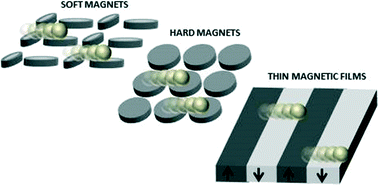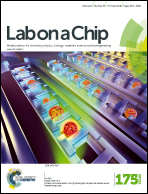Micromagnet arrays enable precise manipulation of individual biological analyte–superparamagnetic bead complexes for separation and sensing
Abstract
In this article, we review lab on a chip (LOC) devices that have been developed for processing magnetically labelled biological analytes, e.g., proteins, nucleic acids, viruses and cells, based on micromagnetic structures and a time-varying magnetic field. We describe the methods that have been developed for fabricating micromagnetic arrays and the bioprocessing operations that have been demonstrated using superparamagnetic (SPM) beads, i.e., programmed transport, switching, separation of specific analytes, and pumping and mixing of fluids in microchannels. The primary advantage of micromagnet devices is that they make it possible to develop systems that control individual SPM beads, enabling high-efficiency separation and analysis. These devices do not require hydrodynamic control and lend themselves to parallel processing of large arrays of SPM beads with modest levels of power consumption. Micromagnet devices are well suited for bioanalytical applications that require high-resolution separation, e.g., detection of rare cell types such as circulating tumour cells, or biosensor applications that require multiple magnetic bioprocessing operations on a single chip.

- This article is part of the themed collection: Lab on a Chip Recent Review Articles

 Please wait while we load your content...
Please wait while we load your content...